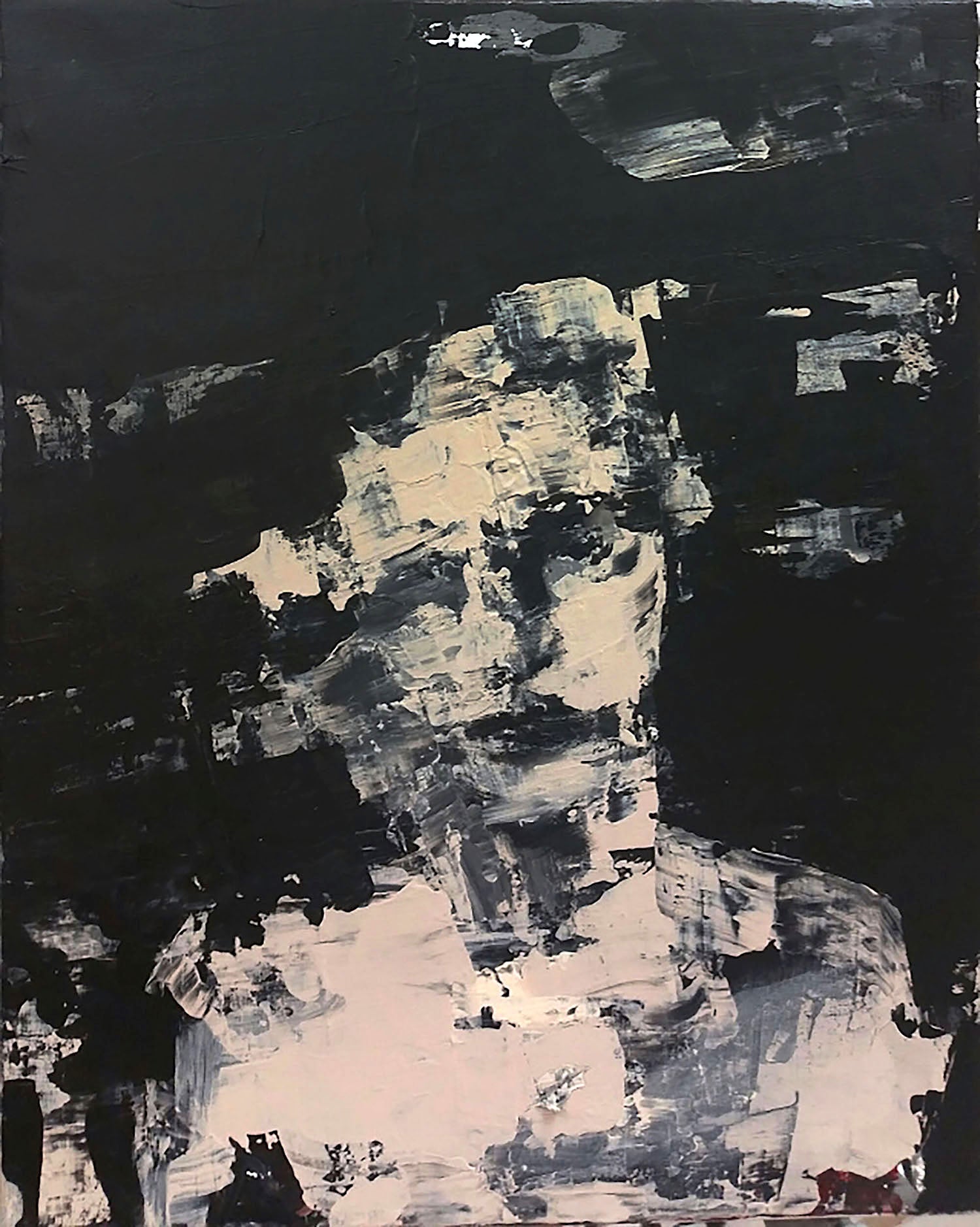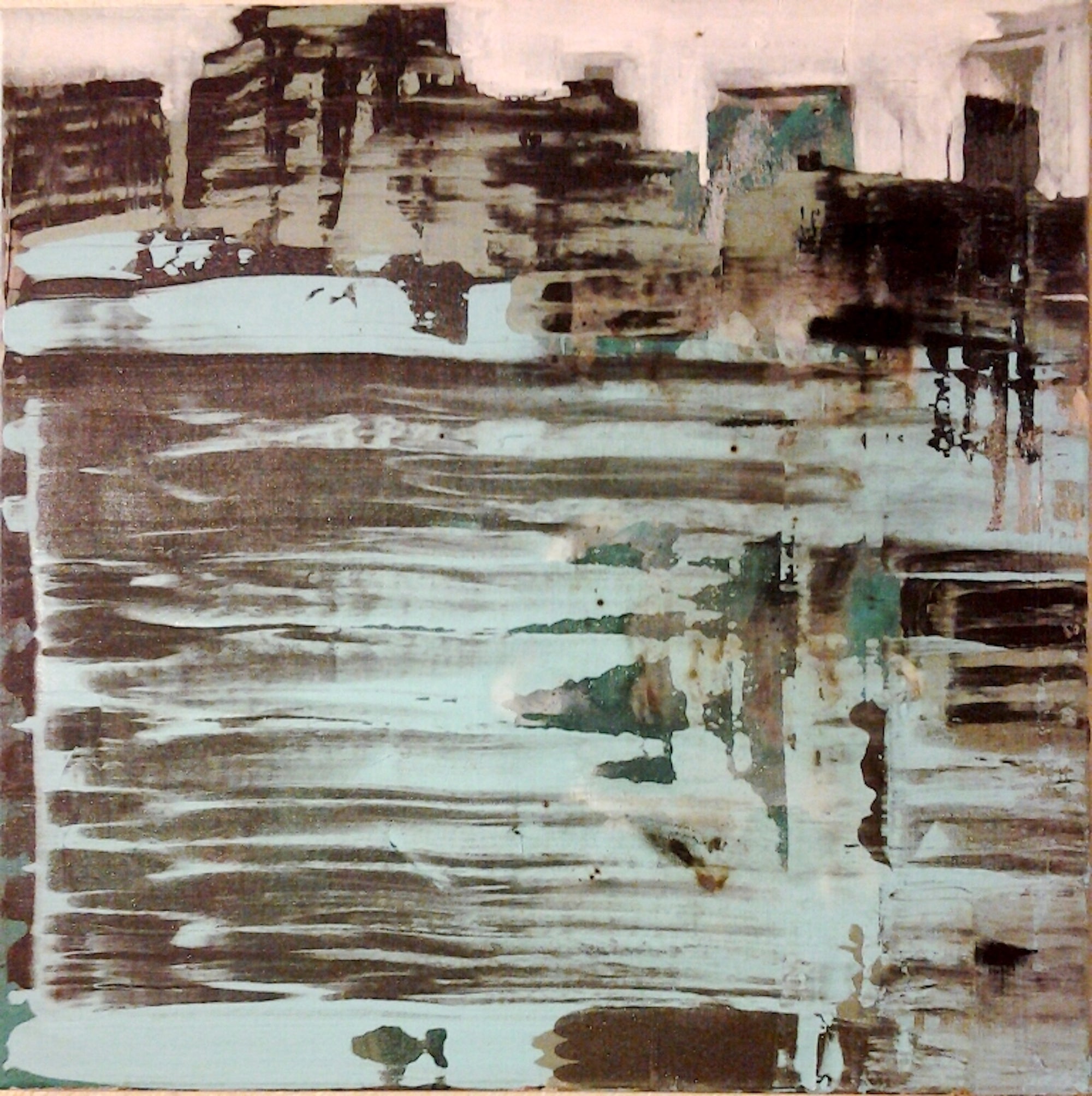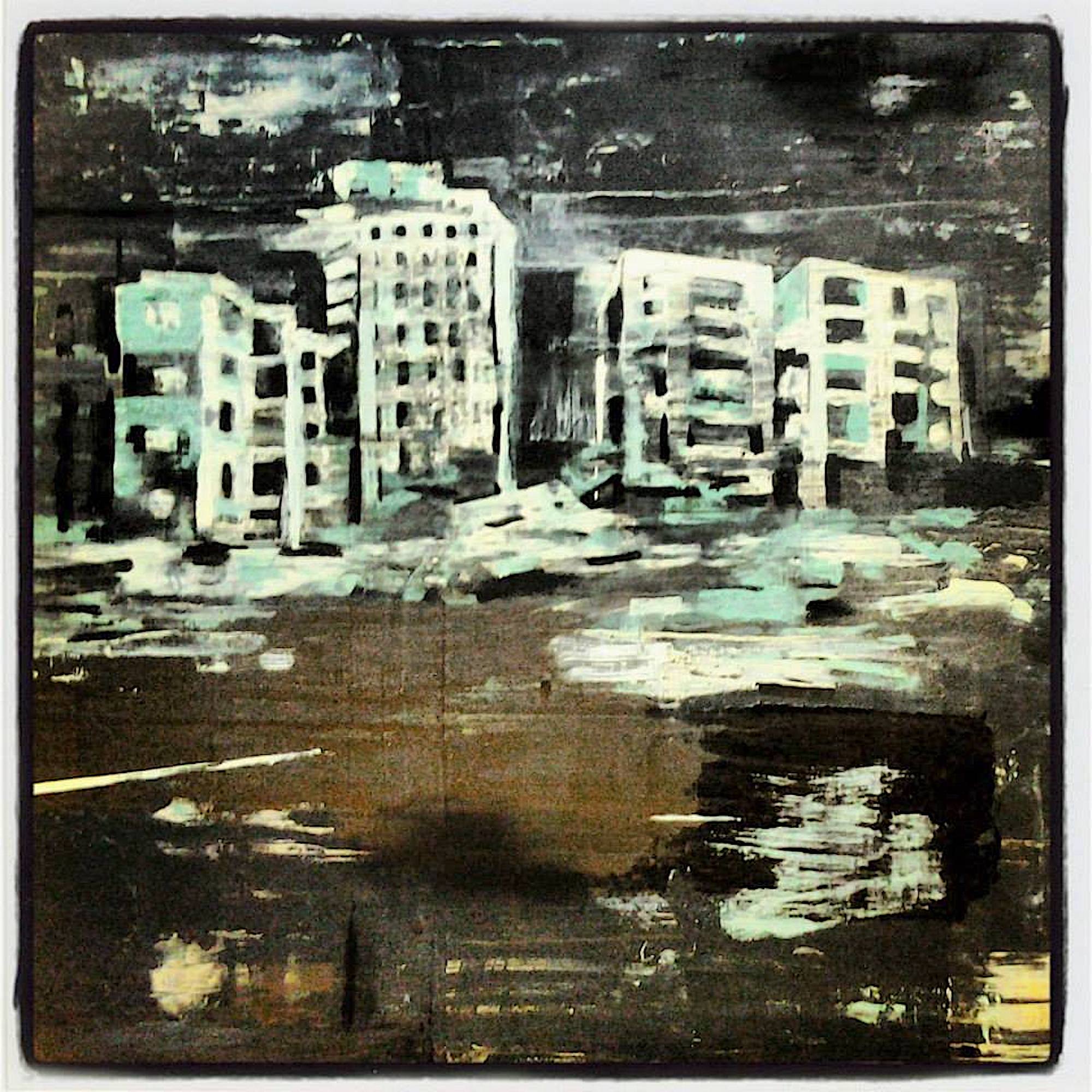
MAAS alum considers how science fiction can help us escape upside down worlds and empower us to reimagine—and rebuild—better ones
By Nadya Sbaiti
To be in Lebanon in the fall and winter of 2019 offered something that neither protesters on the street nor taxidermied naysayers in power had anticipated. As hundreds of thousands of people flooded cities and towns, their presence was an embrace of the unknown, a decided desire to create a world in which they would not have to leave family, friends, and country in search of opportunities elsewhere. The new future would have space for them all.
The popular uprising began the evening of October 17, 2019. It was sparked by the government’s plan to impose taxes on the popular mobile application WhatsApp. But this came on the heels of uncontained wildfires that had blazed through the mountainous Shuf region earlier in the month. Firefighting helicopters sat in idle disrepair due to government neglect, symbolic of what plagued decades of successive Lebanese governments—political polarization, mismanagement of public funds, and rampant corruption and waste. That same noxious mix would once again culminate, hardly a year later, in disregard for residents’ lives and well-being with the Port of Beirut explosion on August 4, 2020.
Explosions, popular and port, appear to bookend the last year in Lebanon. This is to say nothing of the country’s economic implosion and the global pandemic, in between and persisting since. To live through it all has felt surreal; to work through it, often impossible. So when I found myself last spring teaching a course on science fiction while also living it, I could hardly have anticipated its pedagogical possibilities.
New Courses of Action
In the fall of 2019, unbounded imagination structured protesters’ demands for a better life in Lebanon—one that once and for all made political, economic, and moral sense. Demonstrators and activists offered concrete plans to revise the constitution and overhaul the judiciary, called for public reclamation of privatized spaces, and insisted on broad-based collective actions that would bring about an end to sectarianism, patriarchy, homophobia, and racism. But by the beginning of December, faced with increasing violence from army, police, and militia groups, organizing efforts felt stymied, if not downright crushed. The feeling was brutal.

The protests exposed the impoverishment of a certain epistemological hegemony that had “explained” Lebanon as, paradoxically, exceptional in its purported westernized modernity while also hopeless in its oriental sectarianism. The inadequacy of these frameworks echoes those applied to the region as a whole—ones that were quickly dispatched by the revolutionaries in the streets almost a decade ago. Those mass movements in 2011 reminded the world of the more than century-long history of popular action across the Middle East and North Africa. And yet still, when Lebanon was itself enveloped in revolution late last year, the extended moment belied nearly all of the conceptual tools I had amassed as an educator in and of the region. It became clear to me that we needed new ways to capture and process what we were witnessing and living.
What I was really looking for was hope. Something to ground my desire for sustenance. Methods that I could offer students at the American University of Beirut, for whom the stakes of the protests resonated so personally, to help them imagine different possible futures. Long an avid reader of fantasy, science fiction, and speculative fiction, all I could think about were the ways in which these literary genres were constituted by expansive imagination and world-making through their play on time and space. Revolution, I thought, was not so different.
In the spring semester of 2019, I offered a new interdisciplinary graduate seminar called “Science Fiction in/and the Middle East” or MEST-318. Engaging a range of historical, legal, and cultural works of scholarship, film, and literature, we delved into sci fi’s deep historical roots in the Middle East. Situating these works within genealogies and landscapes of the global south produced critical thematic assemblages around colonialism, imperialism, social justice, and climate change.
Significantly, we considered what the contemporary sci fi output from the region indicates about current political needs and desires, and the centrality of gender, race, and class dynamics to re-envisioning futurity. We were exploring the methodological possibilities that science fiction could offer everyone—including scholars, activists, and creative writers—in imagining alternative and emancipatory futures in the region. But that goal, it turned out, would be almost immediately tested.
Combatting COVID-19 with MEST-318
Just three weeks into the semester, the first COVID-19 cases were reported in Lebanon. By mid-March, we were plunged into lockdown—what state authorities referred to as General Mobilization (ta‘bi’a ‘amma). Weeks turned into months, each day seemingly ripped out of the pages of the most dystopic science fiction. The lethal and still mutating virus with no known cure appeared, at least briefly, to flatten people’s experiences across the globe: exponential rates of infection and death, shortages of food and supplies, social isolation, and inept political leadership.
But in Lebanon, the pandemic also came on the heels of a popular mobilization. Demonstrations continued sporadically into 2020 as people sought an end to a broken political system whose embedded corruption led to one of the world’s most remarkable state-sponsored Ponzi schemes. As the monetary house of cards came crashing down, so too did the national currency, which devalued by the week through the first half of the year. Commercial banks allowed most customers only tiny cash withdrawals.
Meanwhile, like their counterparts around the world, Lebanese politicians did not let these nested crises go to waste. They cynically used the pandemic to roll back the ideological gains of the demonstrations and reinforce sectarian patronage systems.
The lockdown exacerbated the already precarious lives of large swathes of the population, and the response of the political and economic elites exposed not just the rotten innards of the spaces we inhabited but also the impoverishment of an elitist political imagination. We were settling in not just for social distancing but for something far more dystopic. During the initial fortnight of the lockdown, as I adjusted to the twinned shocks of national crises and global infection and death, I wondered whether my course still had any relevance. What was the point of reading dystopian science fiction when we were actually living something just as terrifying?
The answer comes in part by recognizing that the pedagogical power of science fiction sits in its simultaneous utopian and dystopian refractions. There is an immanent tension between inspirational possibilities and bleak futures that Lebanon seems to exemplify, lodged in the cleft between a utopian revolution and its dystopian likeness. I began to imagine the possibility that this class—in this place and at this time—might resolve some of this tension.
Over the remaining nine weeks of class, engaging with sci fi’s emancipatory aspects while simultaneously living its more menacing version equipped my students and I with an unexpected sense of control. Whether we read Ahmad Saadawi’s Frankenstein in Baghdad, Ibtissam ‘Azem’s The Book of Disappearance, or watched Larissa Sansour’s sci fi Palestine trilogy, the Age of Corona no longer seemed alien.
As COVID-19 metastasized, MEST-318 became our escape pod. Embedded within the comfort of our familiar dystopia was the sense that we might at least predict the next “real-world” plot twist. That feeling of control extended to harnessing the uncertainty of more unfamiliar, otherworldly elements in the texts so as to construct our own possible exits. In an important sense, the class revealed how sci fi rests on conceptual and lived entanglements between familiarity, control, and escape.

Method in Madness
Sci fi’s literary and artistic interventions help us imagine ourselves out of a world that is itself increasingly hostile to imagination. But also, to paraphrase doyenne Octavia Butler, to write ourselves into a world of our own making, one that more precisely responds to our needs and legacies.* In the Age of Corona, with the near-total uncertainty around the future—including whether we will even live to see it—science fiction and its emphasis on future building offers us a lifeline.
It does so by re-expanding our dramatically shrunken world. COVID-related lockdown has confined us at home for so long that venturing six blocks can feel like interplanetary travel. As our very bodies stretch across couches and not countries, those of us with suddenly useless passports are now experiencing an iota of the ways in which others, incarcerated or undocumented, move through space—or don’t.
Time continues to feel non-linear. But unlike Revolutionary Time, Corona Time makes every day seem both fleeting and interminable, beset by the same routine and occurring between the same walls, floors, and ceilings. Space-time compression is made real with Zoom. Our classrooms contract to tiny boxes on a screen. We are all talking heads. So with its vast universes and myriad realms, characters, and outcomes, science fiction reminds us that we can, in fact, exist in dimensions more expansive than our physically and temporally circumscribed present suggests.
Reframing the present, then, is also vital to sci fi’s promise. It is no coincidence that within the last 15 years, science fiction, speculative fiction, and fantasy have proliferated in parts of the world that had previously not elicited such a critical mass of works. Alongside authors in West Africa, South Asia, and South America, those from the Middle East and North Africa use these genres as a way to imagine other Palestines, Yemens, Irans, or Algerias, for example. As author Basma Ghalayini points out (in her introduction to Palestine + 100: Stories from a Century After the Nakba), with leaders regularly jailing writers for their opinions on the present, “the option of recasting that present—reframing it through fantasy or science fiction—is becoming more and more popular.” And, I would add, more urgent.
Sci fi’s multiverse disrupts claims to a so-called universal human experience. Sci fi literary and artistic output increasingly serves as a witness for the lives of those who have long existed on the political and social margins of society and who have been the targets of technological, medical, social, and political experiments. Escaping into science fiction can thus feel like the re-righting of a world that has hitherto constantly felt upside down. Meanwhile, re-writing oneself, or one’s communities, empowers the critique of status quos and the struggle for more promising futures.
Of Ports and Portals
Yet Lebanon’s residents are still living dystopic science fiction. The August 4 explosion in Beirut, considered one of the largest non-nuclear blasts in modern history, leveled the port area and destroyed buildings in neighborhoods as far as 17 kilometers away. For certain generations, explosions are familiar; today’s devastation, however, is utterly unfamiliar in its incomprehensible and apocalyptic scale, scope, and impact. And in a cruel plot twist, COVID-19 saved lives: during healthier times, at 6:08 pm on a balmy August evening, shops, bars, restaurants, and streets of the neighborhoods nearest the port would have been infinitely more crowded, the port itself bustling with more employees. A pandemic as lifesaver from thousands of tons of explosive ammonium nitrate—would such a story have even made my syllabus?
In her widely regarded Financial Times article “The Pandemic is a Portal,” Arundhati Roy argues for thinking about the coronavirus pandemic as a one-way portal that allows us to “break with the past and imagine [our] world anew.” In Lebanon, however, the pandemic—and now the explosion—confirms continuity through contrasts. We are simultaneously living in three temporal frameworks: revolution, corona, and explosion.
During Revolutionary Time, bodies tightly packed into squares and streets signify a demand for life; we wear masks to protect us against tear gas while shielding our popular movement. During Corona Time, bodies tightly packed into any space are a harbinger of conceivable death; we wear masks to protect us from one another. And during Explosion Time, we wear masks to protect us from the toxic fumes of destruction and decay—a sign of shared political vulnerability.
For her part, Roy is as compelling as ever. But in Lebanon, the past is always of our presents and our futures. As the horizon of possibility transforms into a cage through whose bars we glimpse what lies beyond, MEST-318 taught me that pedagogy, not pandemic, must be the portal.
Dr. Nadya Sbaiti is Assistant Professor at the Center for Arab and Middle Eastern Studies at the American University Beirut. She is a co-founder of Jadaliyya and a 1999 graduate of the MAAS program. A longer version of this article was first published in the magazine Society and Space.
* Huntington Library (2017). Octavia E. Butler: Telling My Stories. Available at:
http://media.huntington.org/uploadedfiles/Files/PDFs/Octavia_E_Butler_Gallery-Guide.pdf
This article is part of the Spring/Summer 2021 CCAS Newsmagazine, which is illustrated with art from Lebanese artists.